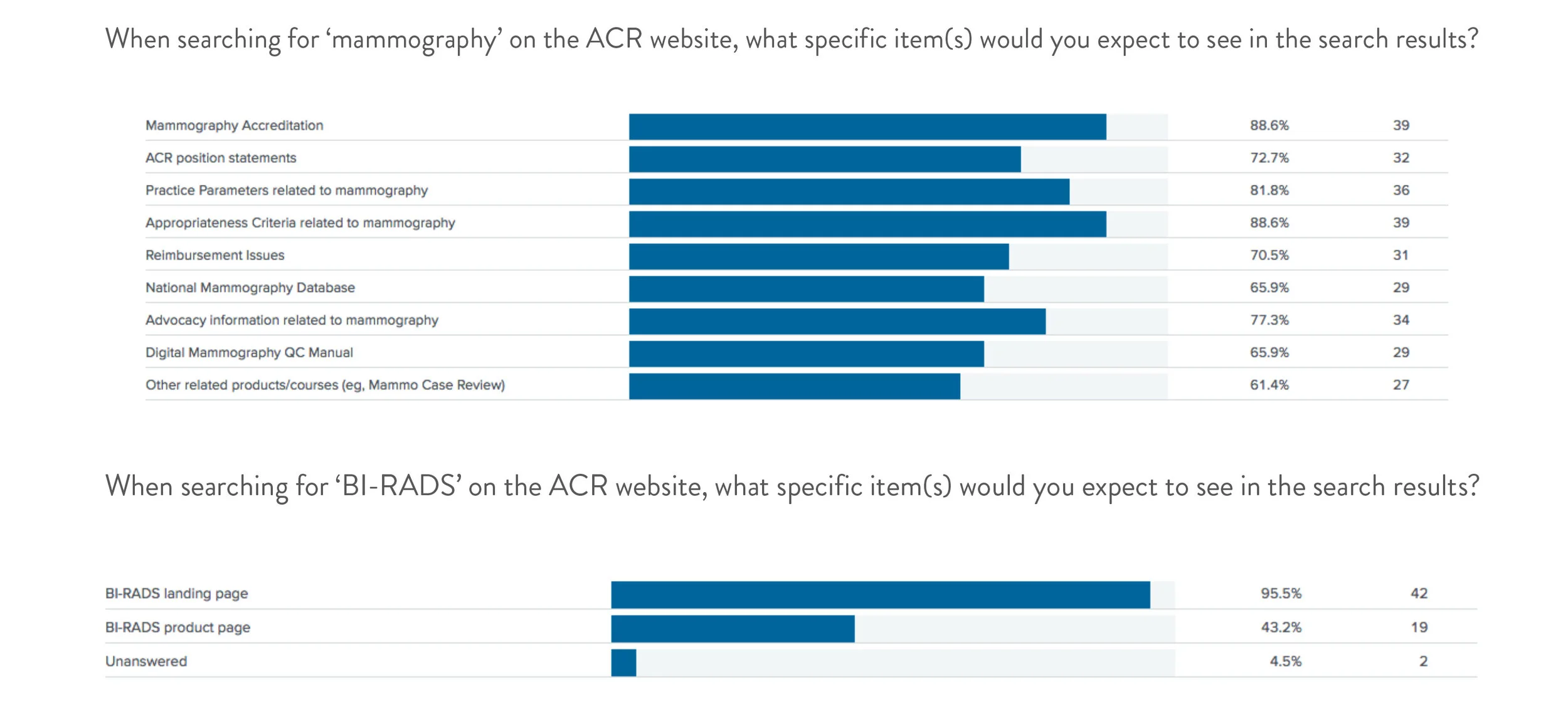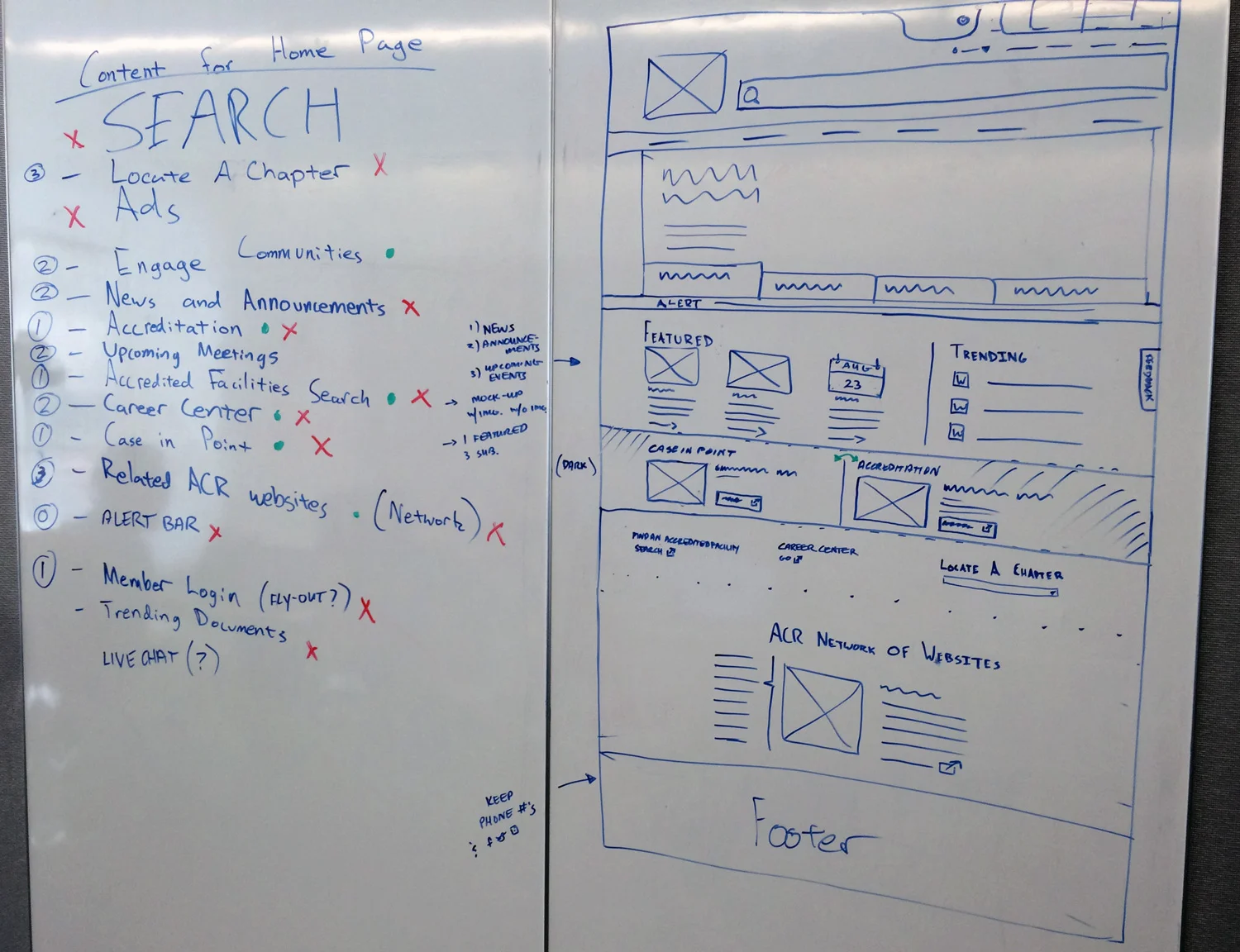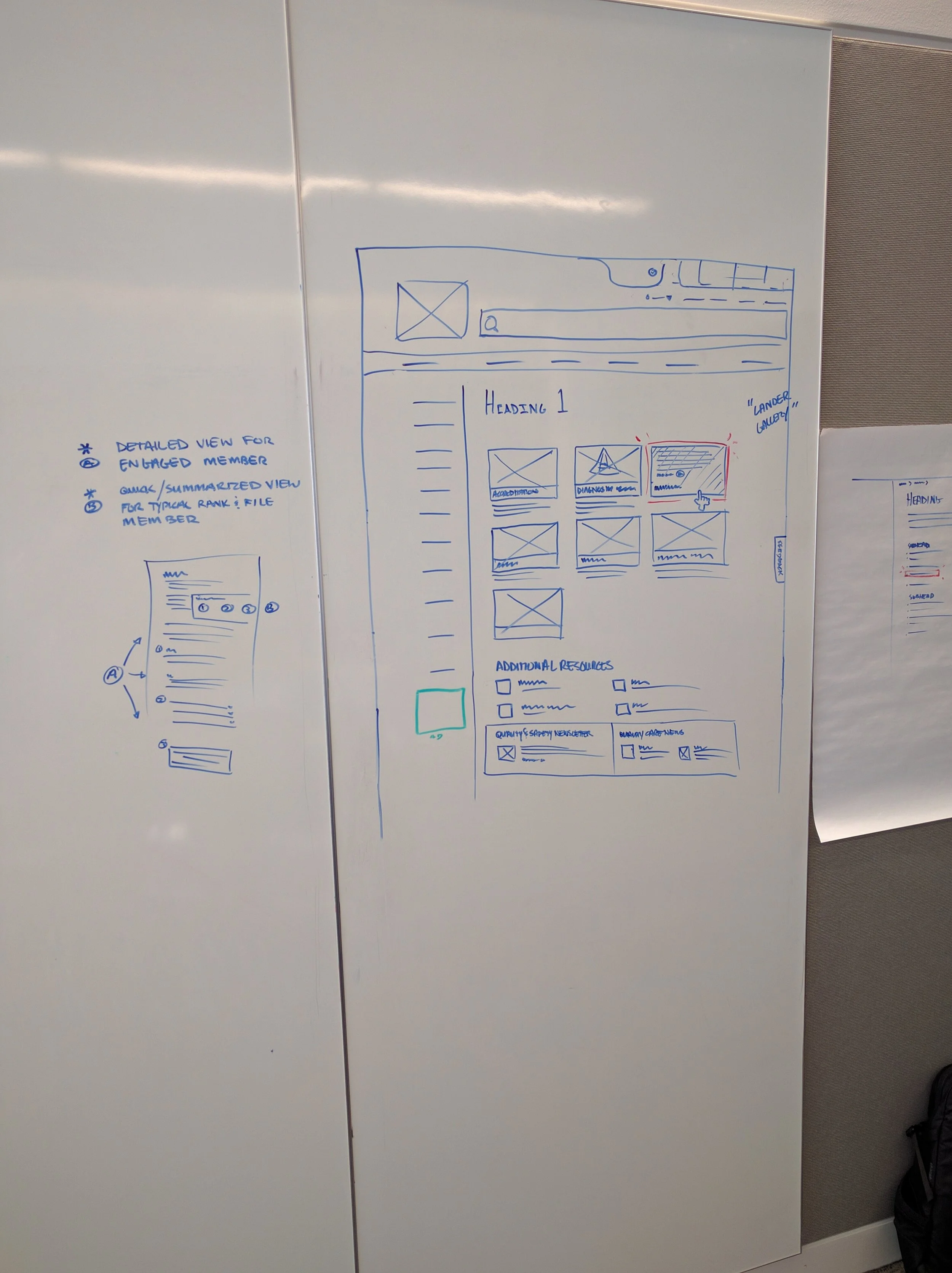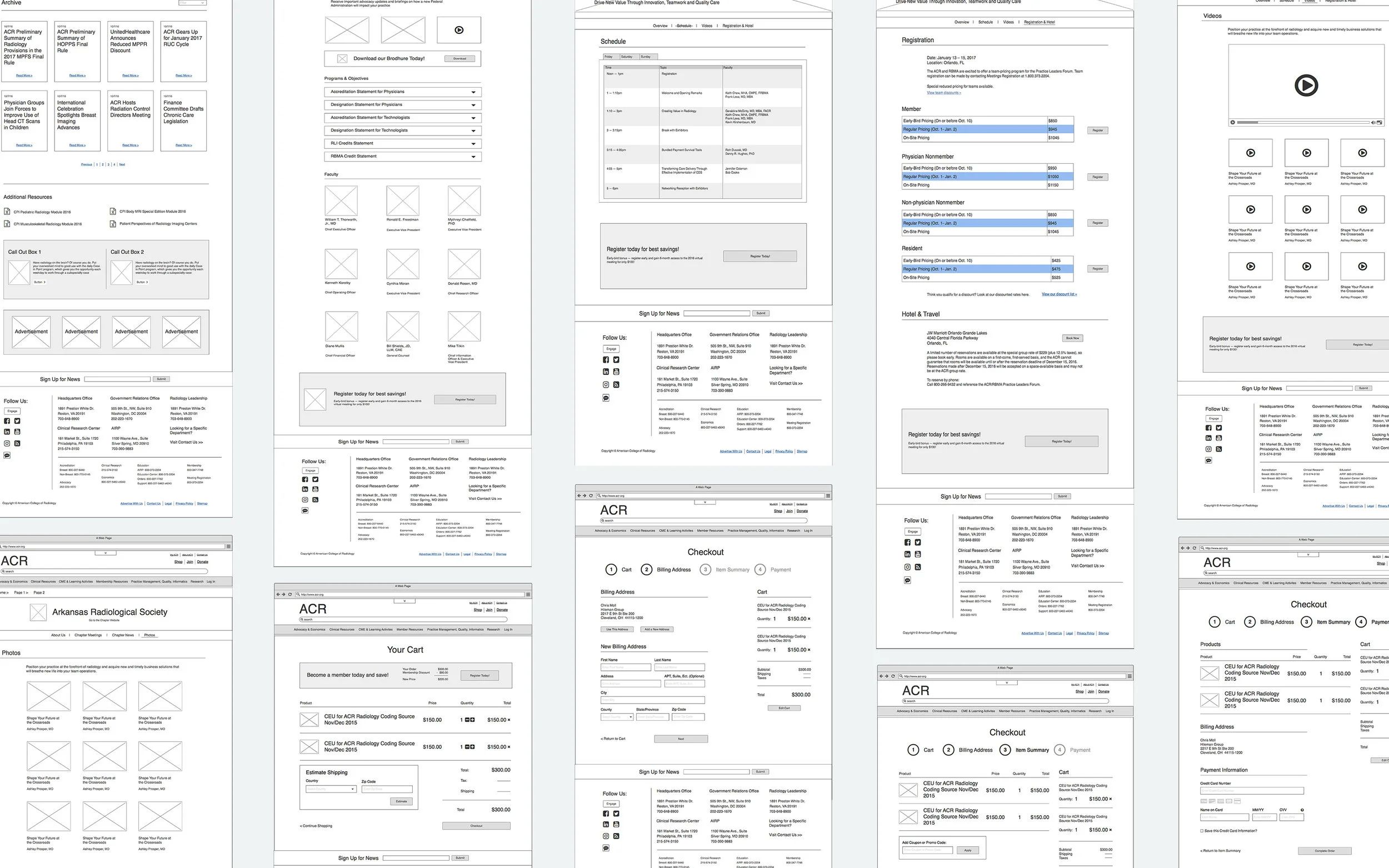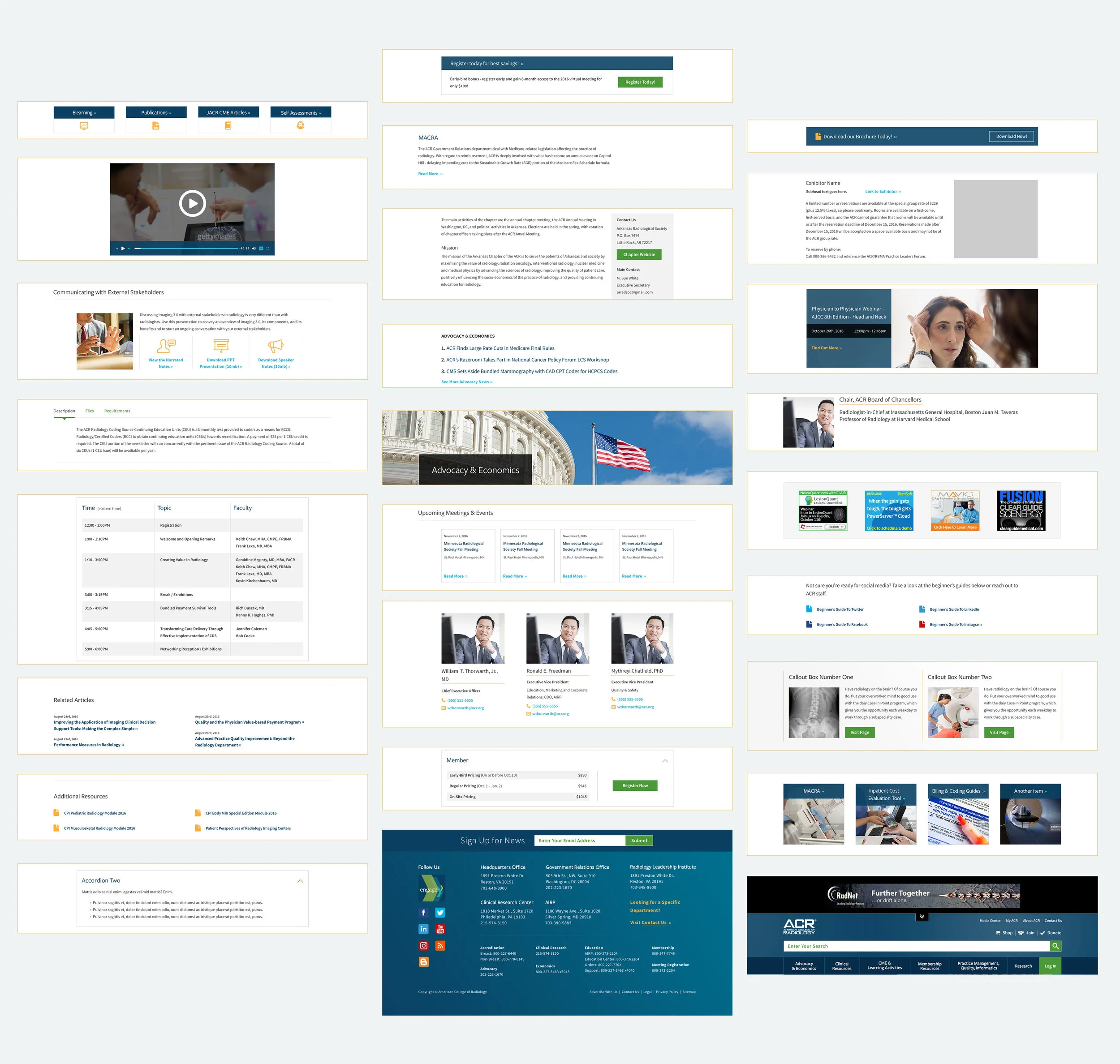American College of Radiology Website
Role: User research, information architecture, user interface design
American College of Radiology Website
Role: User research, information architecture, user interface design
American College of Radiology or ACR needed to rethink their website strategy. Their main website had grown to over 20,000+ pages of content, which was not easily browsed and was non responsive.
Problems Solved
They needed to better understand their users, a more user centered information architecture, and a design system which allowed them to be flexible with the creation of micro sites under the ACR brand.
Process
Stakeholder Interviews & Defining the Site’s Personas
We selected 4 stakeholders from the 35,000+ membership base with varying backgrounds and website experience. Based off of those interviews, we obtained a good idea of what they don’t like about the current site, what the perfect site would be for them, how they interact with their competitor’s sites, and in their minds what success looks like.
Based off of those conversations we started to form an idea of who the site’s users are and in turn the site’s personas.
One of the personas developed for the ACR site
Information Architecture User Testing
With this site being such a technical site from a content perspective the information architecture of the site needed help from users that were very familiar with the types of content categories we would have. We ended up surveying over 1,000+ users through multiple different tree testing surveys and seeing where they would go within the navigation to find information they are looking for.
Some of the tree testing survey results
From that research we ended up creating a sitemap with just over 100 pages of content.
In-Person Wireframes
Based off all of the things I learned in the stakeholder interview and user testing phases I met with the ACR team and collaboratively started to create the initial wireframes. An in-person wireframe session was held to start to account for and combine business priorities and user needs with regards to the website. Starting with the home page we mapped out content areas and their priorities.
Wireframe & Prototype User Testing
After the in person wireframing session the rest of the wireframes were created and mapped out to the content inventory. After the client approved the wireframes it was on the testing them. They were taken to an ACR conference and tested with attendees which were also the primary users of the website. After the insights gained from that testing session we then started to design our the website and create design prototypes to again test with the users.
Design System & Pattern Library
Once the design phase was entered I helped head up the creation of a design system for the website along with the visual designers and front end developers working on the project. We wanted to create a design system which was flexible enough for ACR to create and implement in most situations using the CMS which the site was built on.
Some of the modules from the design system
Once the website launched I tracked the website using Google Analytics and Hotjar to see how users were using the website and based off that data, made iterative changes over time.
Results
Due to the success of the site, the client continued to engage my company in marketing, design and user experience efforts which helped see memberships to ACR increased over the coming years.




